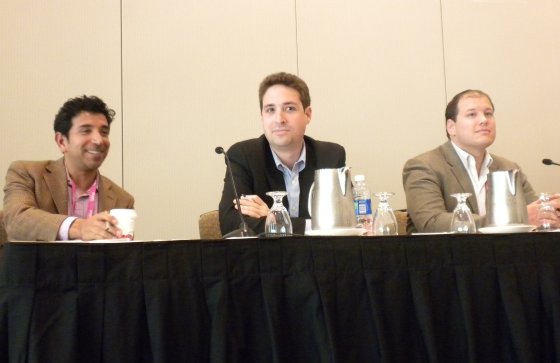I’m at the Enterprise 2.0 conference in Santa Clara, California this week covering the event for the career hub for tech, Dice, and its companion media division, Dice News. For more of my videos from past events and Enterprise 2.0, check out the DiceOutLoud YouTube channel.
At Enterprise 2.0, I listened to a panel of community managers offer some experiential advice on best practices for community engagement. On the panel were:
Panelist – Joseph Porcelli, Community Engagement Strategist, U.S. Department of Homeland Security
Here are some of the issues that came up in the discussion.
- There are three different kind of engagement:
- Situation engagement – Best example of this is a crisis, like Haiti earthquake. Dramatic events like this brings people together in real time.
- Desire engagement – A community that wants to connect on a like subject. Could be physical proximity (my neighborhood) or like interests (hobbies).
- Lack of vision engagement – People who want to make a continuous connection yet can’t physically see each other easily.
- One way to initiate the community is get buy in from the top and let executives make public fools of themselves so others feel more comfortable. For example, at one organization the community manager got the top executives to dress up in silly outfits, such as astronauts, and post them on their profile for the community.
- You need to create a talking point to begin engagement. Learn small likes/dislikes of community members and use that to open the door to conversation.
- A community manager needs to recognize individuals and pull the best things to the top and put them in a central location.
- One woman in the audience argued that adding personal information to the community is critical. If you don’t reveal something personal, you won’t get any community engagement. It’s like any personal engagement in the real world. You always have some level of personal greeting, “Hey, how you doing?” You don’t just immediately start talking business.
- Have senior leadership do something in the community.
- Fill out your profile. When senior leadership doesn’t fill out their profile it sends out a strong negative message to the community: “They obviously don’t have time for me or care about their own community if they don’t even have time to set up their own profile.”
- To get people comfortable with the tools, use non-threatening topics.
- Don’t measure success by the number of people in your network. Measure it by the level of engagement and what your success goals are.
- If you fail to engage with someone who has a valid gripe, then you’ll lose. If you try to engage with someone that doesn’t want to engage with you, then you’ve lost. Need to look at specific arguments and know when to engage. The Air Force has a great chart for rules of engagement and blogging.
- If passion doesn’t already exist in your organization then think twice about launching a community.
- Communities don’t build fast, unless it’s around an event that comes and go. A successful community often requires a 1-2 year time frame.




